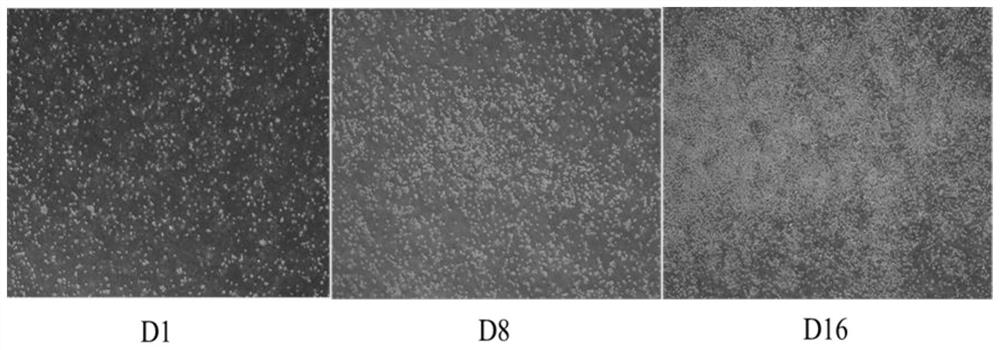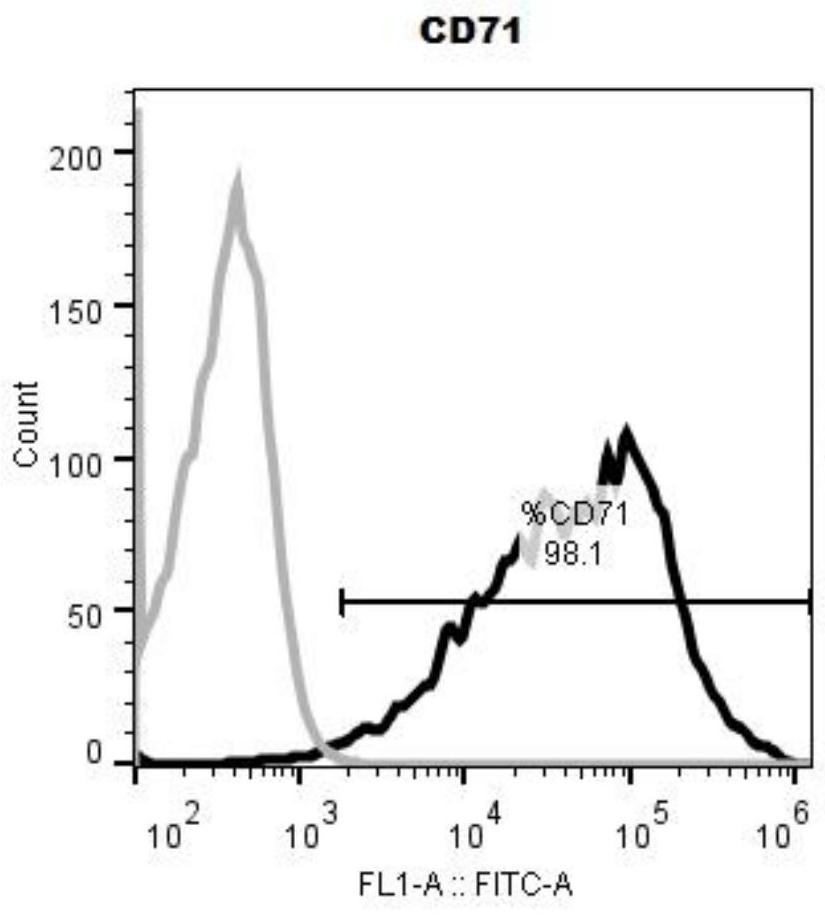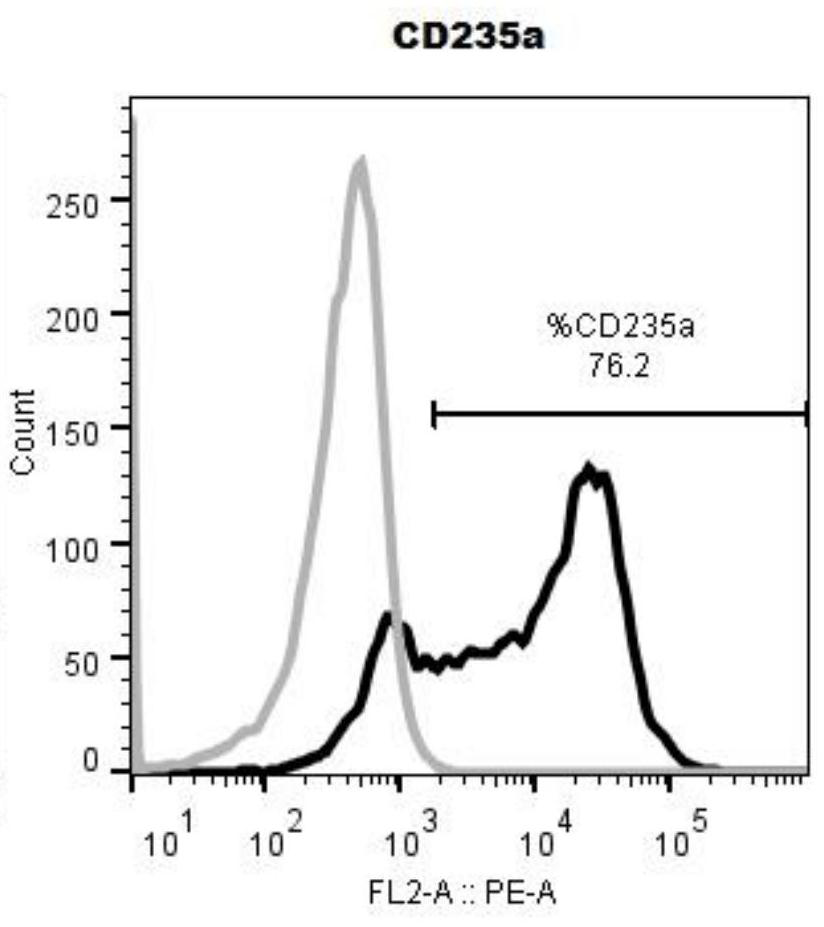A kind of erythrocyte progenitor cell serum-free medium and method of using the same
A serum-free medium and progenitor cell technology, applied in cell culture active agent, culture process, animal cells, etc., can solve the problem of not involving the reconstruction of erythrocyte progenitor cells, maintaining stemness and limited quantity, and inability to expand erythrocyte progenitor cells, etc. problems, to achieve the effect of high clinical application and scientific research value
- Summary
- Abstract
- Description
- Claims
- Application Information
AI Technical Summary
Problems solved by technology
Method used
Image
Examples
Embodiment 1
[0049] Example 1: Erythrocyte progenitor serum-free medium
[0050] Adopt IMDM culture medium (serum-free) as basal medium, add therein the composition that is selected from A, B, C, D, the composition in any column of E in Table 2:
[0051] Table 1 Formulas of different ratios of serum-free medium for erythrocyte progenitor cells
[0052]
[0053]
Embodiment 2
[0054] Example 2. Primary isolation and culture of erythroid progenitor cells
[0055] Collect 10ml of adult peripheral blood, transfer it to a lymphocyte separation tube, centrifuge, take the mononuclear cell layer, wash it twice with DPBS centrifugation, take a sample and count it, and take 0.5×10 cells according to the counting result. 6 The cells / ml were inoculated in 6-well plates and divided into six groups, among which 5 groups were experimental groups and 1 group was the control group. The 5 experimental groups were correspondingly added with a ratio of erythrocyte progenitor cell serum-free medium in Table 1, and the control group Group added Stemspan medium, the amount added was 2ml / well, and the above 6 groups of cells were placed at 37°C, 5% CO 2 cultured in an incubator. The 5 experimental groups added 2ml of fresh erythrocyte progenitor cell serum-free medium on the 4th day of expansion, the control group added Stemspan medium accordingly, and the 5 experimental...
Embodiment 3
[0056] Example 3. Identification of erythroid progenitor cells
[0057] Such as figure 1 As shown, when the erythrocyte progenitor cells were cultured for 1 day, 8 days, and 16 days, the change process of the cell morphology was observed through a microscope, and photographed for preservation. The scale bar of the microscope is 200 μm.
[0058] As shown in Figure 2, on the 10th day of culturing erythrocyte progenitor cells, flow cytometry was used to detect the expression of surface molecules CD71 and CD235a, and the positive rate and average fluorescence intensity indicators were detected respectively.
[0059] Such as image 3 As shown, the total number of cells obtained after the expansion of erythrocyte progenitor cells was counted after 1 day, 8 days, and 16 days of culture. EP-GM means the erythrocyte progenitor cell medium of Formula A in Table 1, and Stemspan is the control group.
[0060] Results: The isolated blood mononuclear cells expanded in the erythrocyte prog...
PUM
 Login to View More
Login to View More Abstract
Description
Claims
Application Information
 Login to View More
Login to View More - Generate Ideas
- Intellectual Property
- Life Sciences
- Materials
- Tech Scout
- Unparalleled Data Quality
- Higher Quality Content
- 60% Fewer Hallucinations
Browse by: Latest US Patents, China's latest patents, Technical Efficacy Thesaurus, Application Domain, Technology Topic, Popular Technical Reports.
© 2025 PatSnap. All rights reserved.Legal|Privacy policy|Modern Slavery Act Transparency Statement|Sitemap|About US| Contact US: help@patsnap.com



